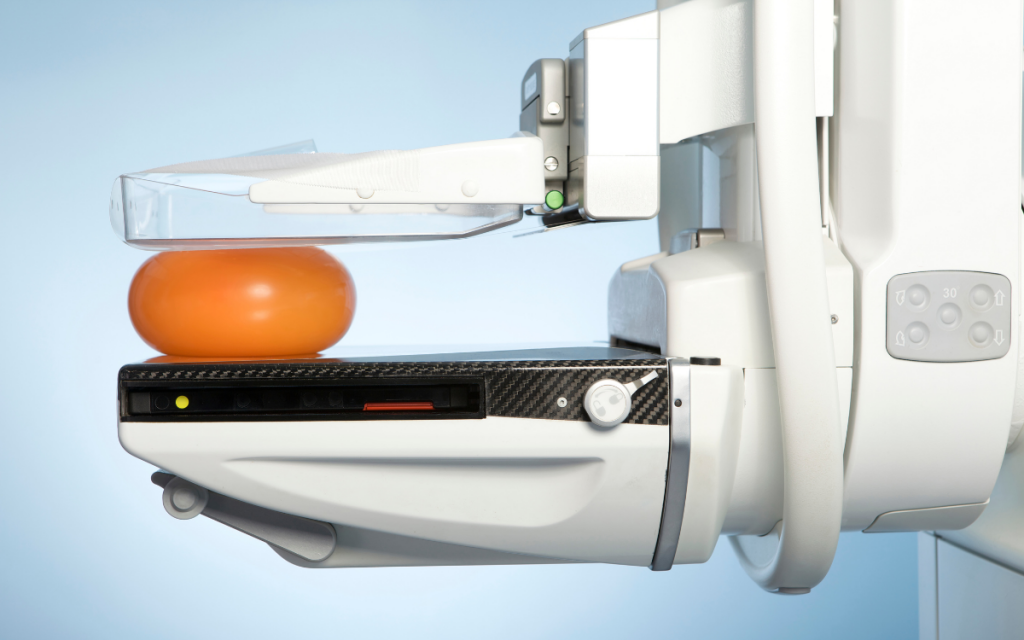The last time you got your mammogram results, you may have noticed a small note about your breast density. If you are like 40 percent of women, it might have said something like, “Your breasts are heterogeneously dense, which may obscure small masses and may put you at greater risk of developing breast cancer in the future.” While this may sound a bit scary, you may be surprised to find that it’s a normal reading.
Normal breast density exists on a spectrum from not dense at all to extremely dense. Knowing this information is important; it helps women, and their doctors decide which breast screening methods are best, and how often they should get them. According to the American Cancer Society, whether a woman has dense breasts or not, regular screenings (mammograms in particular) are still the best way to find cancer early.
Because of the relationship between breast density and cancer risk, it is now the law in many states that breast density information be conveyed to each woman who has a mammogram. This means that women, now more than ever before, understand that breast density matters and many can tell you just how dense their own breasts are. With this knowledge, most women wonder if their breast density will affect their options when it comes to cosmetic breast surgery.
To help answer this question, it will help if we first explain what doctors mean when they talk about breast density.
What is Breast Density?
Breast density is a radiologic (mammogram) finding that has nothing to do with how breasts look or feel from the outside. Breast density reflects the amount of fibrous and glandular tissue in a woman’s breasts compared with the amount of fatty tissue in the breasts, as seen on a mammogram.
Thus, the classification of density has to do with the ratio of fat (not a dense tissue) to everything else that makes up the breast, including this glandular and fibrous tissue. On a mammogram, the fat shows up dark and the rest of this matter shows up white- therefore the whiter the matter on a mammogram, the denser the breast classification. The breast density classifications that may be assigned are – from least dense to most dense – the following:
- Fatty: meaning the breasts are almost entirely fatty (about 10% of women experience this finding).
- Scattered Fibroglandular: meaning few areas of dense tissue are scattered throughout the breasts (about 40% of women experience this finding).
- Heterogeneously Dense: The breasts are evenly dense throughout (about 40% of women experience this finding).
- Extremely Dense: meaning the breast are mostly dense throughout (about 10 percent of women are categorized as having extremely dense breast tissue.)


You can learn more about these breast density types- and see images too – at the American Cancer Society.
At Synergy Plastic Surgery, our plastic surgeons perform a wide range of cosmetic surgery procedures including breast implants, liposuction, breast lifts, and breast reductions. In some cases, a combination of one or more of these procedures may be performed, depending on the goals of the patient.
How does breast density may come into play with each of these procedures?
Breast Augmentation
Breast implants are placed underneath the breast tissue, not within it. This means that the breast tissue itself, no matter how dense, sits on top of the implant and therefore has little bearing on whether a breast implant is possible.
Liposuction
Liposuction in the breasts alone is sometimes an option for women who are looking for a mild reduction in breast size. It is possible that a woman with extremely dense breasts, which means they have a lower ratio of fat to other tissue, may have a limit as to how much fat can be successfully removed using this method. It is important to discuss your personal aesthetic goals with your surgeon to find a solve that is unique to your anatomy and goals.
Breast Reduction or Breast Lift
A breast reduction or lift sometimes includes liposuction, and the limitation previously mentioned may come in to play to some degree. However, because these procedures also include an open surgical element, the goal of the reduction usually isn’t limited by breast density.
In conclusion, the biggest takeaway is that none of these procedures are totally off limits to a patient simply because they have higher breast density.
There are many factors that will limit a person’s plastic surgery options such as poor health, weight instability, or tobacco use, but breast density usually isn’t one of them!
As previously mentioned, every person has their own unique anatomical identity – and that includes breast density. Our plastic surgeons take all of this (and more) into consideration when customizing a plan to of action to meet your personalized aesthetic goals.
Schedule your complimentary consultation today (link: https://www.synergyplasticsurgery.com/contact/) to unlock your personalized Synergy Experience!


Leave a Reply